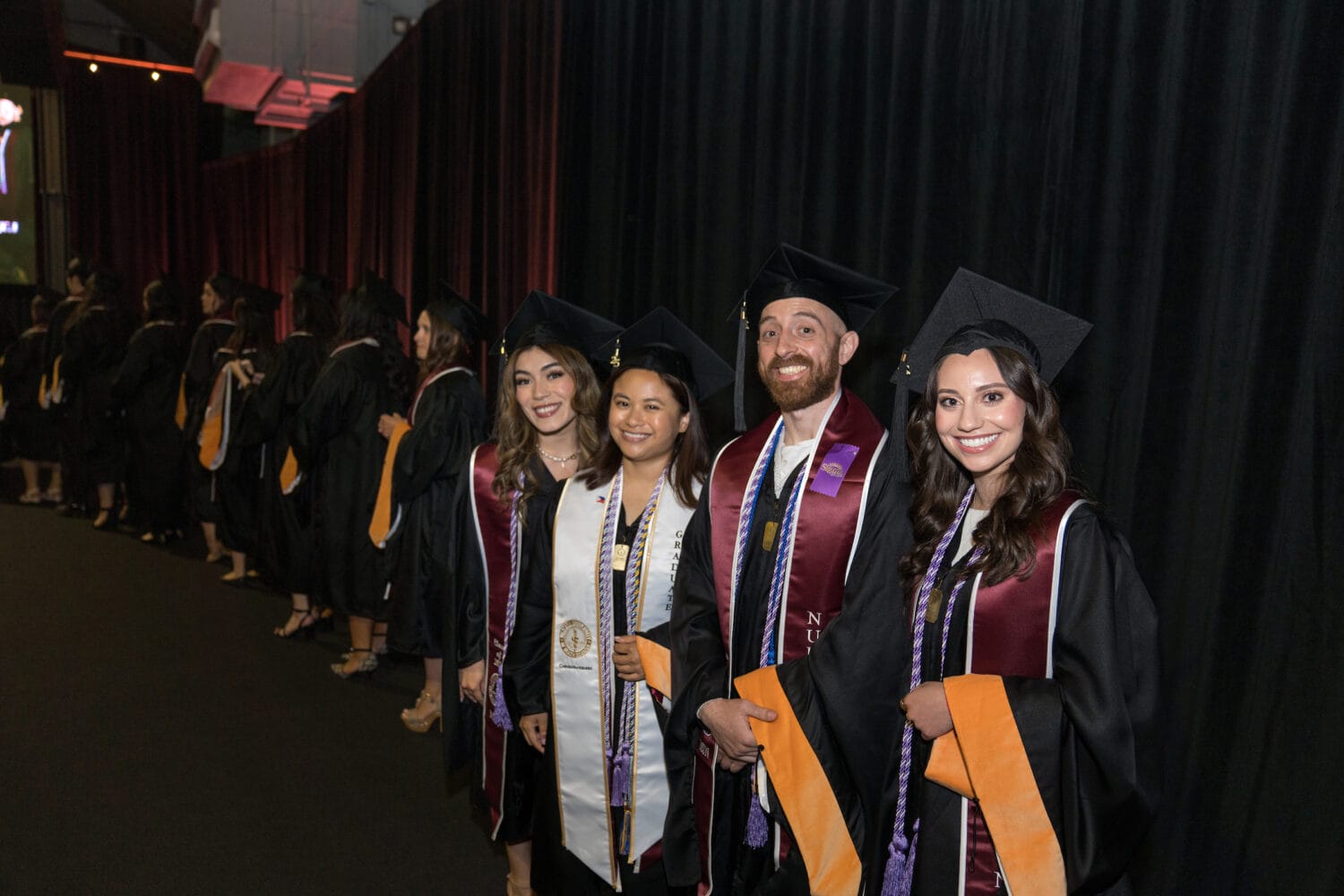This Week@WesternU, July 30-Aug. 3, 2018
Welcome Week 2018
Western University of Health Sciences will hold Welcome Week activities for its Lebanon, Oregon campus July 30-Aug. 3 and for its Pomona, California campus Aug. 6-11. Welcome Week is set aside to help new students successfully navigate the campus and take advantage of available services. Please see the Welcome Week Schedule for program-specific dates and times.
Click here to view Welcome Week information for Lebanon: https://www.westernu.edu/students-or/orientation/
Click here to view Welcome Week information for Pomona: https://www.westernu.edu/students/welcome-week/students-orientation/
WesternU to welcome more than 1,100 new students
Western University of Health Sciences will welcome more than 1,100 new students to the beginning of their health professions careers at Convocation and white coat ceremonies in Pomona, California and Lebanon, Oregon.
Click here to read the full story.
From the College of Graduate Nursing:
WesternU College of Graduate Nursing welcomes visiting scholar from Chile
Western University of Health Sciences’ College of Graduate Nursing welcomed its first visiting nurse scholar, who is sharing her expertise as a midwife nurse and sleep therapist while learning about CGN’s distance learning model.
Maria Patricia Masalán, EM, Mg SP, associate professor in the School of Nursing, Pontificia Universidad Católica de Chile, arrived July 2 and will stay through the CGN white coat ceremony Aug. 11.
“This has been a wonderful experience,” she said. “Everyone has been warm and welcoming. I’m very grateful for all the faculty and students who received me. I can take this experience to expand the programs in my country.”
Click here to read the full story.
From the College of Health Sciences:
Department of Physician Assistant Education news
On Friday, July 20, the California Governor signed SB 997. Monning. Health care service plan: physician to enrollee ratios.
SB 997 prevented another bill, SB 494, passed in 2013, from being deactivated. SB 494 expanded the definition of a Primary Care Provider to include PAs and NPs. In addition, the bill permitted a health plan to increase the number of patients assigned to a primary care physician based on the use of one or more PAs or NPs. SB 494 was written in such a way that the expanded definition of a Primary Care Provider and the assignment of additional patients to providers would go away starting January 1, 2019. SB 977 removed the January 2019 date so that SB 494 will remain in effect without expiration.
Both SB 494 and SB 997 were bills sponsored by the California Academy of PAs (CAPA), which promotes, protects, and expands the PA profession in California. All the WesternU PA faculty are members of CAPA. The current CAPA President is Roy Guizado, PA Department Chair at WesternU. The CAPA board also boasts two elected representatives who are WesternU alumni – Saloni Swarup, MS, PAC ’13, and Scott Martin, MS, PA-C ‘13.
From the College of Veterinary Medicine:
Kudos on accomplishments
A research team led by CVM Associate Professor Brian Oakley recently published a paper titled, “The cecal microbiome of commercial broiler chickens varies significantly by season.” Seasonal variation in broiler performance has been observed for many years but this paper was the first to use high-throughput DNA sequencing tools to identify specific members of the commercial poultry GI microbiome that vary according to season. This information may help inform specific interventions to limit undesirable seasonal influences on the microbiome and promote beneficial taxa according to season. The work is published in the journal Poultry Science. Co-authors included colleagues from the USDA Agricultural Research Service, Elton Vasconcelos (CVM post-doc), CVM Associate Professor Pedro Diniz, and student researchers Ella Richardson, DVM ’18, and Kim Calloway, DVM ’18.
Dr. Elton Vasconcelos (CVM post-doc) heads a database development project aimed at better investigating Schistosoma mansoni long non-coding RNAs and their expression correlation to protein-coding genes. This work is a continuation of his previous studies in Brazil (https://www.nature.com/articles/s41598-017-10853-6) and was published earlier this month in the DATABASE journal from the Oxford University Press (https://academic.oup.com/database/article/doi/10.1093/database/bay068/5051101). Long non-coding RNAs (lncRNAs) are key players in gene regulation mechanisms (mainly epigenetics events) and, therefore, are currently considered as promising targets for therapeutic interventions. Dr. Vasconcelos has also recently written a grant proposal for investigating lncRNAs on the canine heartworm (Dirofilaria immitis) genome. This grant counts with the collaboration of Dr. Michelle Michalski (University of Wisconsin – Oshkosh) and CVM Associate Professors (Dr. Oakley and Dr. Diniz). The research team is currently seeking funding opportunities.
CVM Associate Professor Mohammad Mir gave the invited keynote lecture, “Hantavirus induced Cardiopulmonary Syndrome: A Public Health Concern,” at the 10th International Virology Summit, held in Vienna, Austria recently. Dr. Mir received the “best keynote speaker award” at this international virology meeting.
From the College of Osteopathic Medicine of the Pacific:
Kudos on accomplishments
Second-year COMP student Vesta Yazdani will present a poster at the 42nd annual American College of Osteopathic Family Physicians of California Conference in Anaheim, California Aug. 2-5. WesternU Vice President for External and Clinical Affairs David Baron, DO, MSEd, was the faculty adviser for this project. Yazdani V, Pendi K, Pendi A, Turner J, Shahbazi A, Baron D. The 50 most cited publications in anxiety disorder research.
From COMP and the College of Optometry:
Kudos on accomplishments
Dr. Sebastien Fuchs of COMP and Dr. Frank Spors of the College of Optometry received an intramural grant for their project, “Amelioration of the surface of contact lenses with zinc oxide nanoparticles to prevent corneal infections.” The goal is to modify the surface of contact lenses with nanoparticles to modify their physical and biological properties to reduce the risk of eye infections.



